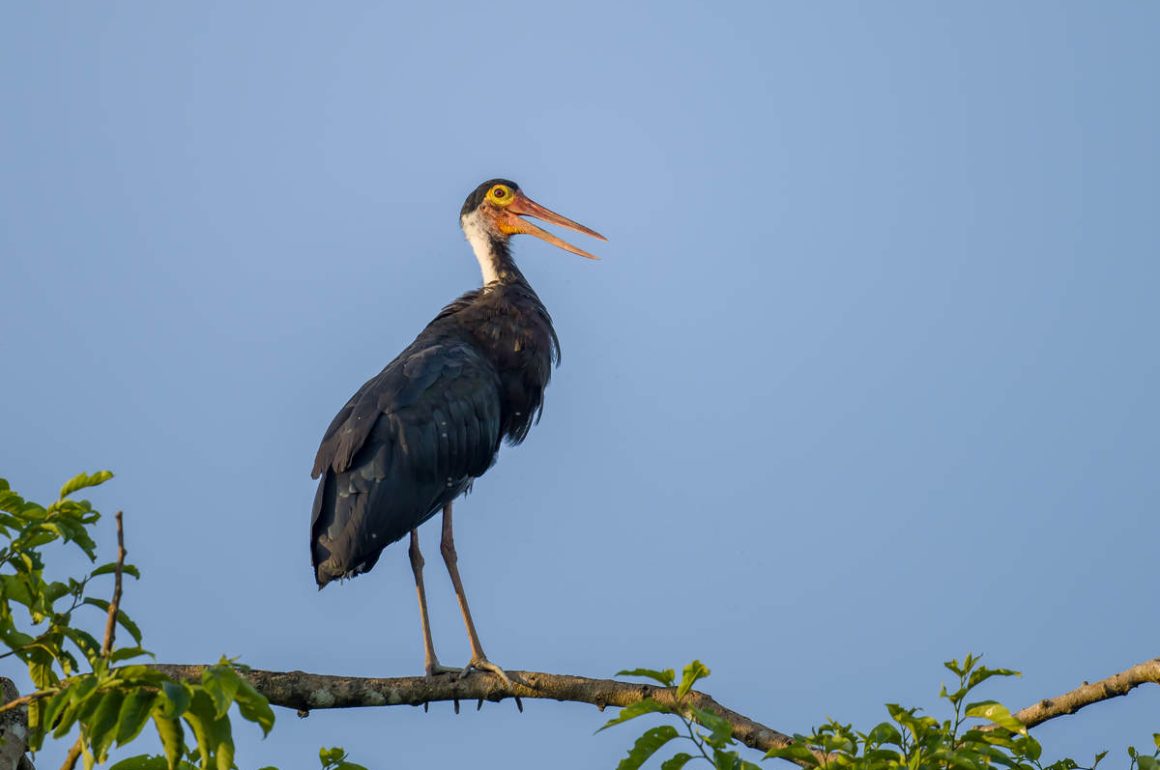
Take a medium-sized stork, then imagine placing a fried egg over each of its eyes. Color the white of the egg yellow and the yellow of the egg dark red, and you get a close approximation of what Storm’s Stork looks like.
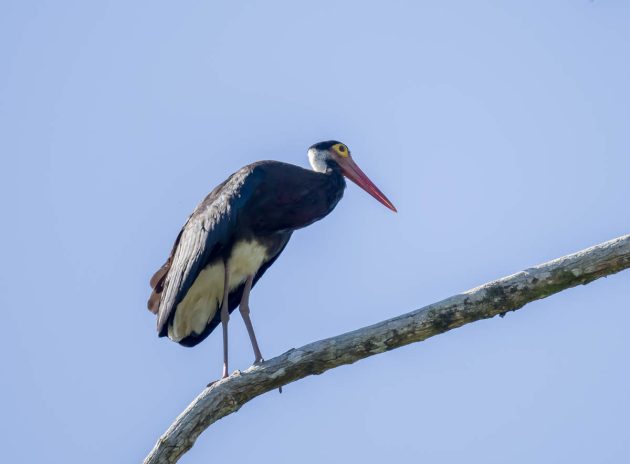
The population size of Storm’s Storkis frightfully small – according to Birdlife International, there are about 400 to 500 individuals, equating to about 260 to 330 mature birds. It is by far the rarest of all storks and listed as Endangered.
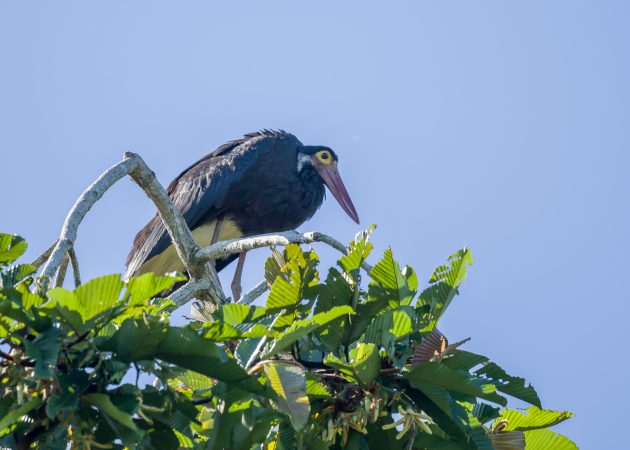
These few birds live on the Malaysian peninsula, on Sumatra, and on Borneo (the photos shown here were taken at Sukau, Sabah, Borneo, Malaysia).
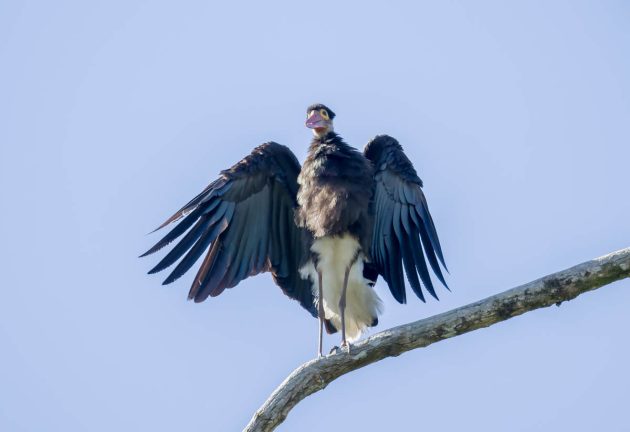
It is also by far the stork species with the lowest number of scientific papers focusing on it. An interesting overview summarizing the research on the world’s 20 stork species finds that of the almost 1000 papers on storks published between 1950 and 2022, only 2 are on Storm’s Stork while all other stork species have at least 11 papers, and often many more (371 in the case of the White Stork). Being rare and choosing peat bog swamp as the preferred habitat apparently limits the species’ appeal to ornithologists.
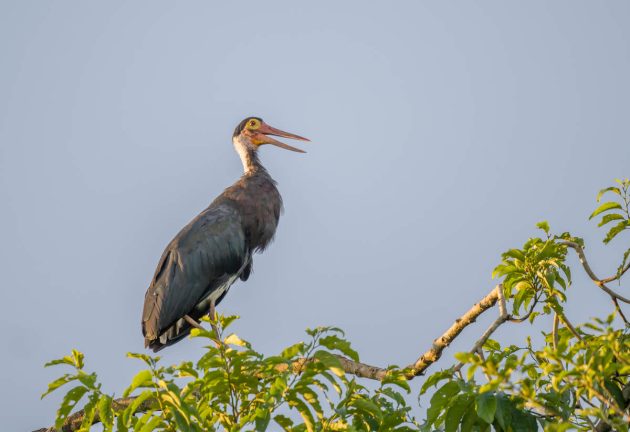
Storm’s Stork is one of the relatively rare examples of a bird named for a German, specifically, Capt. Theodor Hugo Storm (1850-1927), a German mariner who later emigrated to the USA (source: HBW). Apparently, as captain of a ship, he collected specimens in Southeast Asia including Borneo, and sent them to a museum in Germany. As a little thank you, this stork species was named after him (though maybe he would have preferred a gift coupon). For those with an urgent need for additional irrelevant information, check out a thread on Birdforum.
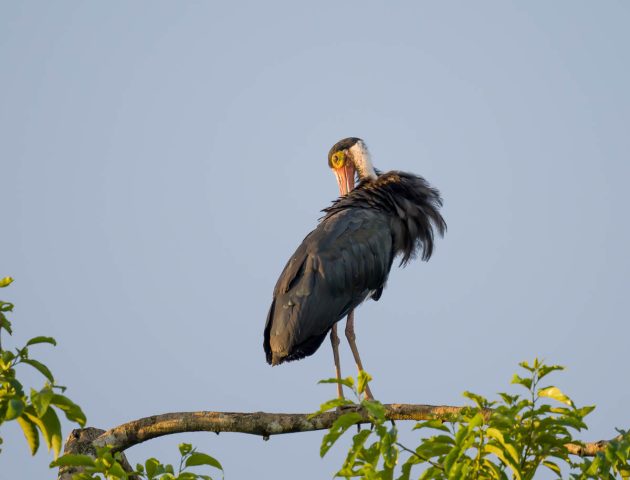
The stork was actually bred in captivity at the San Diego Zoo (source) – in fact, the very detailed Wikipedia page of the bird has a photo taken at the zoo.
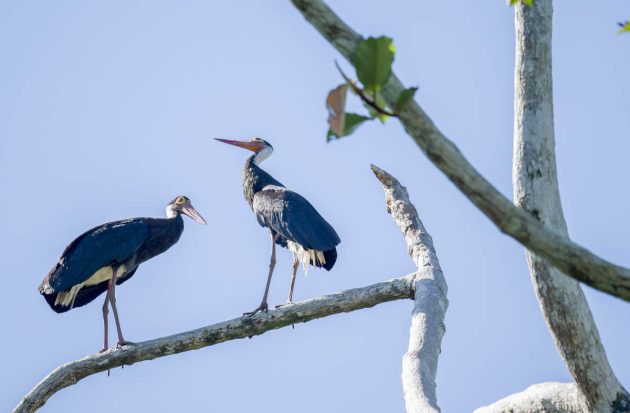
To me, the concept of pair bonding is one of the murkier ones in biology. Interaction between paired birds is often explained as “strengthening the pair bond”, which sounds more like a vague description than a proper explanation (I forgot where I read it, but I remember one author of a bird-related book stating that he sometimes writes postcards to his wife or girlfriend “to strengthen the pair bond”).
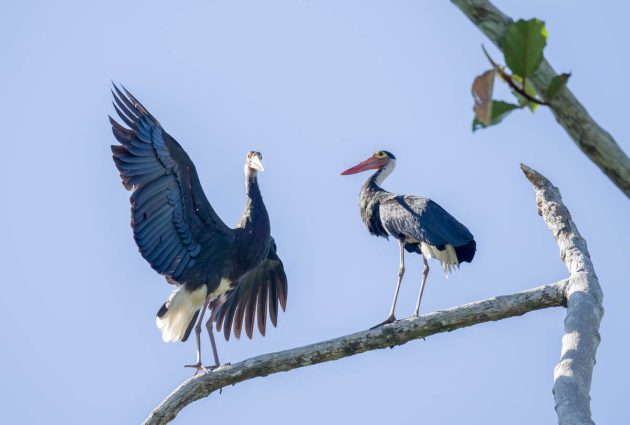
Anyway, the photos below presumably show such a pair-bonding exercise, unless one of the birds has just admitted to having voted for Trump in the presidential election and is now harshly criticized for its stupidity.
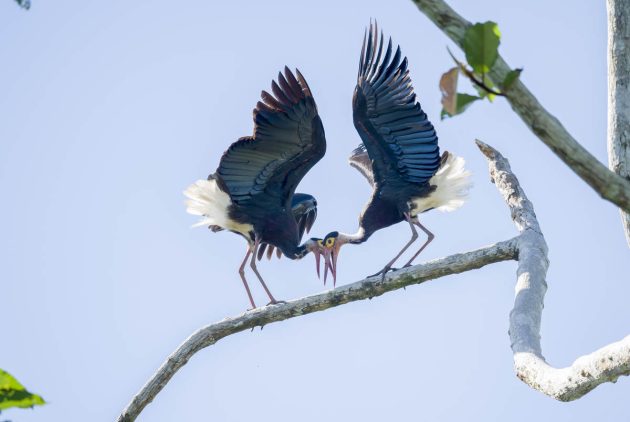
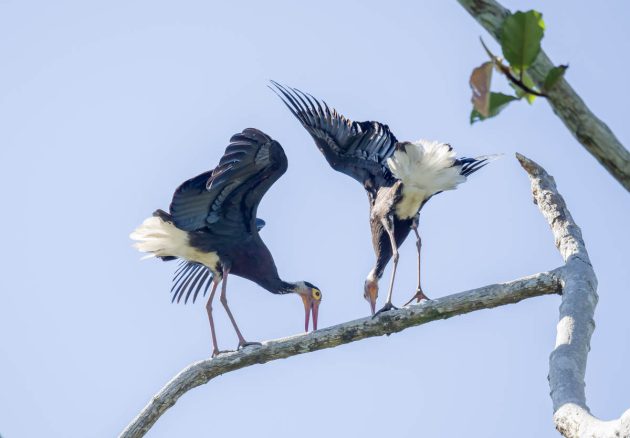
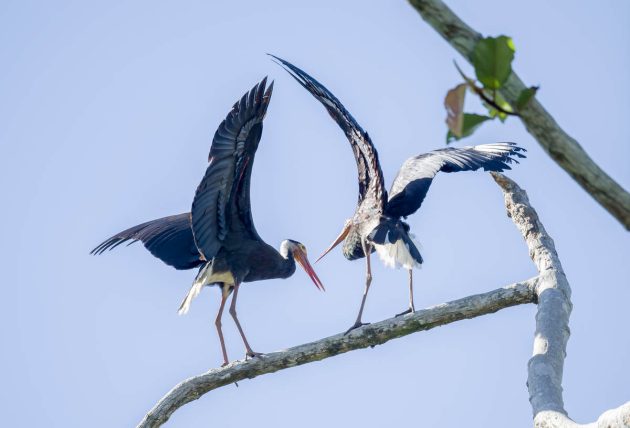
Finally, a direct quotation from the Wikipedia page, so as to give me a link to the final photo: “This stork is often seen soaring at great heights over rivers and forest clearings, and like many other storks utilizes thermals to assist it in gliding. This behavior is said to be “contagious” because when one individual begins to soar, conspecifics join it in flight”.
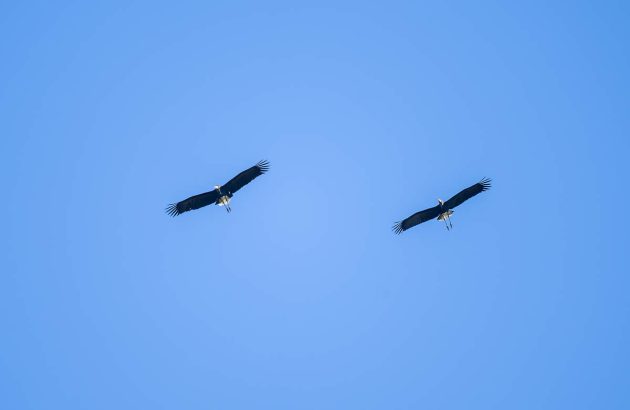
It must be nice to be a bird sometimes.


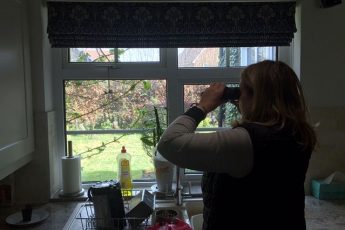
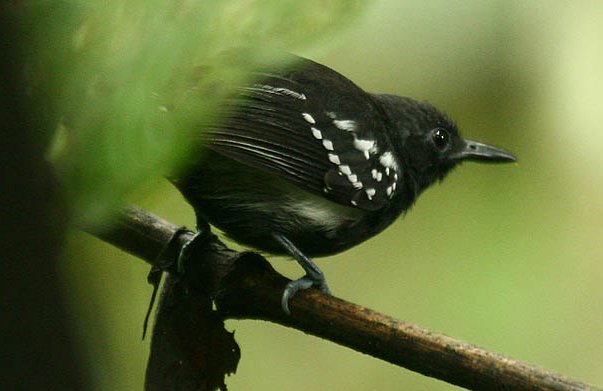

 New writers welcome – please contact us for details.
New writers welcome – please contact us for details.

















A number of years ago, I was a passenger on a container ship named MV Theodor Storm, sailing from Adelaide to Singapore, just in case you needed any additional irrelevant information. As I recall, I didn’t see any storks on that voyage, nor any other interesting birds, for that matter. 🙂
Michael, one can never have enough irrelevant information … Something to add from my side: there is a German author, Theodor Storm (1817-1888) who is considered to be a fairly important figure in German literature (I think I had to read one of his works in high school). He is not the Storm of Storm’s Stork’s fame – but he may well have been the namesake of the ship you were on.
In that case, my information becomes even more irrelevant. 😉
Well, it is a success of sorts, I guess … or to quote one of “Kai’s weird bands”: “Anyone can fail but truly losing takes ambition” (The Burning Hell, “Bird Watching”).